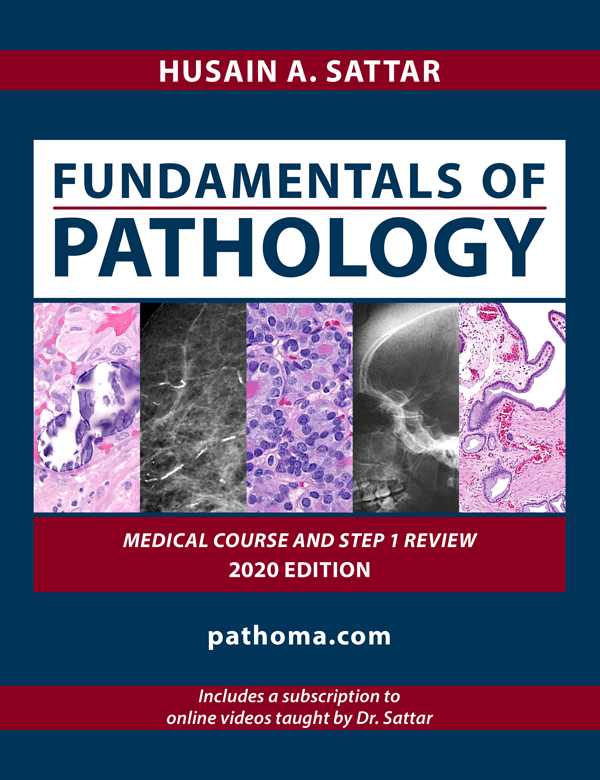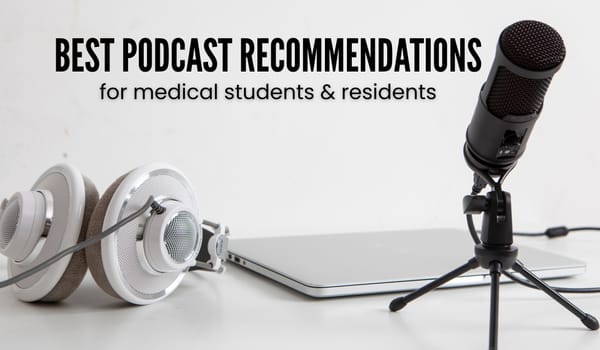USMLE Resources Comparison: UFAPS & More
If you know me, you’ll know I’m a resource fiend. I adore resources. I hoard resources. Especially…

If you know me, you’ll know I’m a resource fiend. I adore resources. I hoard resources. Especially USMLE resources. And I’ve been lucky enough to try many different ones during my medical school journey. During my Step 1 prep, I dabbled in a few different ones – some I bought, some I borrowed, and some I got to try out for free – and these are purely my opinions. Please do still read forums, check Reddit, watch YouTube videos, etc. to learn more about how others prepped and what they thought of these USMLE resources and others.
Many will argue that many resources (too many resources) is detrimental, and they are likely right. Since I’ve tried so many, I’d like to put this post together to help you choose the few that you think would be best for YOU, and save you some time and hopefully money!
I think I’ll do this blog post on a rolling-basis; I’ll start with a few, and edit it over time. I’ll always share on my Instagram when I add a new resource, but you can also subscribe for email notifications.
Important: this article is not sponsored by any one company; these are all my own views. I do however have some discount codes that are affiliate links for many of these USMLE resources, which I will share as we discuss the different ones. If you decide to use the affiliate codes, you are also supporting me, so thank you so much for that.
We’ll start with the most obvious USMLE resources, because, believe it or not, I still get questions on these staples of Step 1: UFAPS. UFAPS stands for UWorld, First Aid, Pathoma and Sketchy Please note that I’m an IMG (international medical graduate), and so my advice might be more suited for fellow IMGs, since our test taking/application timeline is a different.
[A few words about my prep: I took my Step 1 exam in the middle of my fifth year of medical school; I studied about 8 months, give or take, and had about five weeks of ‘dedicated’ right before I took my exam in January. Juggling going to classes and studying for Step 1 was certainly challenging, and I’m really grateful I managed to secure myself a dedicated period because I don’t think I would have managed without one. Overall, I didn’t get the score I was expecting (you can read my ‘score reveal’ here), but I’m happy that the score will allow me to pursue the specialty I’d like (emergency medicine).]
UWorld:
I sometimes get the question, “should I use UWorld?” and the answer is absolutely, definitely, 100%: YES. Yes, you will need UWorld for your Step 1 preparation. Without a doubt.
But it gets more complicated than that. A lot of questions might come up, which I’ll attempt to answer shortly here.
How long should I buy it for? As an IMG, I would recommend a one-year subscription. It’s only $100 more than the 6-month one, but extending it even by a few weeks is really expensive.
Should I do offline UWorld first? No, absolutely not – this is purely my opinion, but I think it would be a shame to ‘waste’ your UW by first going through it ‘offline’ (aka the screenshotted versions of questions, in PDF format). UWorld is a learning tool, and you can use the stats and feedback from the program to tailor your studying.
Should I do UW twice? I think so – at least for me, this was a definite requirement. I was seeing a lot of this material for the first time, tested in a way that I’d never been tested before, and I needed the reinforcement of a ‘second pass.’
Should I do my UW incorrects? Definitely! For me the main question was “when?”
I didn’t know if I should do my incorrects after the first pass (1st – incorrects – 2nd – incorrects) or only after my second pass. In the end, I decided to do them after my SECOND pass (1st – Rx – 2nd – incorrects), for a few reasons. I’d gotten a ~60% average on my first pass, which left me with almost half the question bank to redo if I redid my questions after the first pass. Furthermore, a lot of those concepts were already ‘easier’ and I didn’t want to have to spend precious time redoing the same ‘easy’ questions 3 times.
Do UWorld percentages matter? I don’t think so, and many people on the Internet agree. UWorld is not a testing tool, but rather a learning tool. If you’re getting very very low averages consistently, then perhaps you might want to explore why that is, but if you’re around average or steadily increasing, then I think there’s no need to worry.
Bonus: You can screenshot from the website client of UW, which is great! I don’t know if it’s an accident or they finally allowed us to study the material properly, but I’m very happy I found it. I want to warn you against blinding copying/pasting everything though – while it’s easy to make notes from UW if you can c/p sentences, I think that’s very passive, and you can quite quickly emass enormous amounts of text that you won’t likely have the time/chance to review.
First Aid (FA):
This textbook is considered by many to be the “Bible” of the USMLE. I would agree that it’s incredibly useful, and while I personally wouldn’t recommend preparing for the exam without First Aid, I do know a select few who did.
First Aid isn’t really a textbook; it’s more like a very concise collection of very important, so-called ‘high yield’ information that often comes up on these exams. It doesn’t explain concepts, but rather summarizes them with incredible diagrams, tables, mnemonics and descriptions.
First Aid was the center of my USMLE Step 1 prep: I accumulated all the information from many different important sources into it, and then when I reread the annotated pages, I had all the things I needed to know about a subject before me.
How to annotate FA? This is an incredibly complex question, and there’s not great info out there. It’s hard to know what’s too much, what’s too little, etc. I personally thought annotating FA well was a major part of my process, and I’m putting together a video/blog post on this in more detail.
For now, I’ll just say this: yes, you should buy a recent copy (read this blog post to get an idea why); do not over-annotate your First Aid (i.e. keep most of the info from the MAIN resources), and for me, it was important to have everything in one place (so I didn’t really use a separate notebook). I tried to condense the information as much as possible – if it didn’t fit, it was likely too much detail I was writing down.
The main thing takeaway from this blog post though, is the power of a good color code.
What do you mean by “color code”? Ah, the famous color code. I think the BEST way to do it is based on source – where did you get this info from? If you got it from UW, use blue; if you got it from Boards&Beyond, use green. NBME factoids were in red. In general, I didn’t write much of B&B into First Aid, and I also kept Pathoma and Sketchy separate. I think adding those would have overwhelmed/saturated my First Aid too much, so I only added small tidbits that really clarified a topic for me instead of transcribing a full B&B video.
How does a source-based color code help? I think it’s got two great advantages. For one, whenever I look at a page of my FA, I know immediately how important that info is. If it’s from UW, that’s high yield, but if it’s from an NBME, then it’s ultra-HY, while if it’s from a random video on YouTube, then I know I don’t have to expend too much energy memorizing it (and I likely just added it to help me understand something better). Secondly, it helps me trace something back to a source – if I later question the validity of an annotation, I can figure out where I got that piece of information from.
This goes for highlighting, too: I had one color for my first read of FA, then a second one for the subsequent ‘reads.” I also had a color for all the things I got wrong in UW for first pass, and a different for things I got wrong in 2nd pass (whoops). I also had a special color for micro things ‘not found in Sketchy’ that let me look through the micro chapter faster, by allowing me to focus on just the things I hadn’t learned really well with Sketchy.
How many times should you read through FA? I’m not a great person to ask about this – I struggled to read FA from front to back. Many people did 3-4-5, even 10 passes (I don’t quite get how), but I read it once through, and then in bits from then on. I usually flipped to the appropriate page when I was doing UW and was looking over each question, and added in any additional info.
A lot of the material in FA was actually asked on the exam, and what wasn’t in First Aid was likely in UWorld, so these two together make up a good chunk of the material you will need to know. The other USMLE resources I used, therefore, were mainly supplements to FA and UW: they helped with understanding (usually the video courses), or memorizing (the mnemonic sketch programs). The rest of the blog post will cover these other USMLE resources in depth below, starting with the P-S of UFAPS:
Pathoma:

This is a video series accompanied by a really great textbook – I recommend using the two together. If you have the time to make your own notes, then the video series is enough, but I honestly think the two together is a great combination and saves you a ton of time.
Pathoma is a course that focuses on pathology, and it covers the main topics you’ll need to know really well. I don’t think it covers everything you need to know, though, but the things that Dr. Sattar says are high yield in the videos are indeed very high yield. (I actually had a highlighter color specifically for the things that he referred to as HY.)
The best thing about Pathoma is that the explanations are logical. He doesn’t just state things as facts, but explains why it’s this way in such a way that you finally understand and know it forever (and ever).
Do you need the book and the videos? The videos, definitely; the book is a great supplement and saves you from feeling like you have to take notes as he talks. It’s up to you, but just the textbook definitely won’t do it.
When to use Pathoma? I used it a bit in my pathology course (third year of med school for me in my 6 year curriculum), but not enough. I wish I’d done ALL of Pathoma back then, because a) it’s an amazing resource even for class, and b) that way during Step 1 prep, it would’ve been a review of the material.
Should you annotate it into First Aid? I know people who did, but I didn’t – I didn’t want to, and I thought it would be too hard. There’s not that much space in FA anyway, and the material is so well organized in the textbook, so I kept my Pathoma annotations there.
The downside to this is that you’ve got one extra textbook to reference, which resulted in me not reviewing my Pathoma annotations that much. The only saving grace was that I had used that special “HY” color for the things he said were very important, which allowed me to quickly flip through the chapters and glance at just the HY stuff.
Sketchy Medical (Micro & Pharm):
The Sketchy series take concepts that require lots of memorization, namely pharmacology and microbiology, and turns them into colorful and memorable sketches. Different symbols are tied to different terms/concepts, and by recalling the picture, you can remember so many little details.
It works phenomenally for visual learners, but I’d argue that even those who don’t consider themselves visual learners should still try to give it a go. My take on Sketchy is the same as treating syphilis in people allergic to penicillin – first step would be to try to desensitize them to penicillin, instead of trying another drug. Same here – if you think Sketchy doesn’t work the first time, give it another go. You might realize it DOES work, and it’s worth it, trust me.
My belief in Sketchy is so strong that I wrote an entire blog post dedicated to Sketchy, breaking down how I used it, and what I thought of Micro, Pharm and even Patho. Click here to read that – I don’t have a discount code for Sketchy, but let me know if that’s something you’d be interested in!
So, that covers UFAPS, the core of USMLE prep. All in all, these resources will definitely get you to a great place, but there are SO many USMLE resources out there now, and I really want to explore some of the other ones.
USMLE Rx:
USMLE Rx is created by the same company that publishes First Aid for USMLE; on Instagram, they are called @firstaidteam and you can follow the account for frequent discounts and “Question of the Day” style posts.
USMLE Rx has many aspects that make it a beneficial for step prep. First and foremost, it is a question bank. They had about 2000 questions when I was using it, and the questions are based on content that you will likely find in First Aid. As such, it works really well to reinforce FA concepts. I actually started my step prep with Rx, and I’m really glad that I did – with Rx, I learned how to use questions to study and so didn’t feel like I was “wasting” my UW by knowing absolutely nothing about how a q-bank works. I did a few hundred questions, systems-based, before switching to UW, and after my first pass, I did another 1000 or so questions.
Many of the questions tested similar concepts as UW, and you can really see a pattern – this just reassured me that the questions were in fact useful, and I learned a lot from Rx. They tested many similar things that UW did, sometimes from different angles, and although they didn’t always have multi-step questions, it was still great for FA reinforcement.
Other Rx components (which make up the Rx 360 package):
– Flash Facts: their version of flashcards; I didn’t use these much, because although the cards themselves were great, the interface was bulky and not nearly as customizable as Anki.
– Express videos: I used these religiously in the beginning of my prep. I had had no idea how to approach First Aid, so I used Express videos to ‘walk me through’ FA and for that I’m grateful, because without it, I wouldn’t’ve known where to even start. I ended up watching the majority of the videos, which are quick and fast and align perfectly with each FA subsection. In retrospect, I don’t feel like it was the best use of my time to watch almost ALL the videos, since not all the videos were useful, but of course, it was hard to know which would be good or not before watching them. Overall, watching the Express videos gave me a good sense of structure and progress in FA, but it was definitely not necessary.
– Digital FA: this feature was great – for each q-bank question, it would show you precisely which FA pages corresponded to the question, and this sped up the annotation process significantly.
What makes Rx really cool? Since it’s perfectly synced with First Aid, you can create highly customized study sessions (be it with flashcards, videos or even questions) that align precisely with whatever topics you’re currently covering. I think this feature would make it very helpful for those using step material during their med school classes, since you can pick and choose what to study very effectively.
Upcoming USMLE resources we’ll be covering:
- Anki
- Amboss
- Boards & Beyond
- Osmosis
- Pixorize (check out my full review here and message me for a discount code of 15% off if you know you want to use it!)
- Physeo
- Other (limited experience with these): Picmonic, Kaplan
Are there other resources you’d like to hear about? Let me know in the comments below, and share your experiences so students can learn from you, too.




